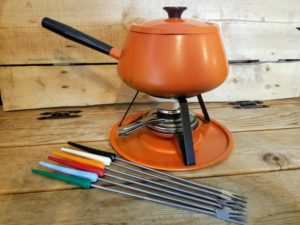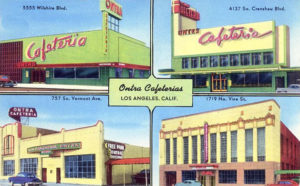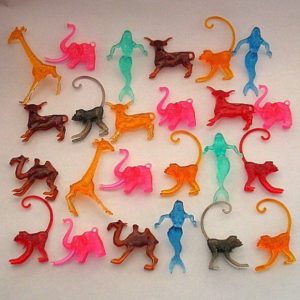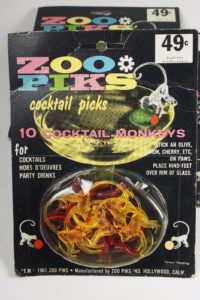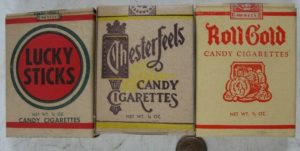
We Baby Boomers remember that Kool-Aid was always king, but once had some pretty serious competition.
Back in the late 1950’s, an artificial sweetener called Cyclamate was legalized for use within the USA. Adoption was slow at first, but soft drink manufacturers soon figured out that in addition to low calories, its benefits included having none of the energy rush that sugar did. ergo, moms could allow their children to imbibe prodigious amounts of Cyclamate-sweetened drinks with no fear of the kids bouncing off of the walls afterwards.
Pillsbury decided to give Kool-Aid a run for their money in 1964. Funny Face drink mixes were pre-sweetened with Cyclamates, and advertising made the benefits to harried mothers very evident. The result was big sales.
Kids loved the advertising too. The drinks came with names like Goofy Grape, Loudmouth Lime, Rootin’ Tootin’ Raspberry, and Freckle Face Strawberry. Oh, there were also two very politically incorrect flavors, Chinese Cherry, and Injun Orange. (gasp!)
It didn’t take long for protests to render the ethnically-named flavors verboten. So Choo-Choo Cherry and Jolly Olly Orange were quickly brought in as replacements. By the way, the featured commercial shows the original group, complete with Chinese Cherry’s gong, which I had forgotten about.

As the 60’s wore on, more flavors were added. These included Rah-Rah Rootbeer, Chilly Cherry-Cola, Captain Black Cherry, Loud Mouth Punch, and Tart ‘N’ Tangy Lemon. Then came the Cyclamate ban.
I’m planning on writing a future piece about Cyclamates, so I won’t go into too much detail. Let’s just say that some controversial tests were conducted that indicated that the artificial sweetener MIGHT cause cancer in quantities that were unimaginable.

With that, they were banned in the US. And a soft drink and artificial sweetener industry that had come to depend on the substance was sent into a whirlwind of activity to try to compensate for the loss of its cash cow.
At first, Funny Face switched to saccharine. The kids of the nation reacted with a common “ecch!” So Pillsbury swiftly switched to an add-sugar business model. They were able to shave the price of the packets of flavor in half, but sales still suffered in comparison to the grand old days.
However, Funny face wasn’t giving up yet. They aggressively advertised throughout the early 70’s, and also offered premiums in exchange for empty packages that included pitchers, cups, Hot Wheels cars, pillows, kites, iron-on patches, records, and plush dolls and plastic miniature toys in the fruits’ likenesses.
It was a valiant fight, but one that Pillsbury was destined to lose. Kool-Aid weathered the Cyclamate ban much better, largely due to the fact that they already offered an add-sugar product. There was no massive paradigm shift for Kool-Aid customers. As the 70’s progressed, Funny face ads as well as the product itself became less and less seen. By 1980, Pillsbury had sold the brand, and it vanished shortly afterwards.
So here’s to Funny face drink mixes, yet another Boomer memory that vanished when you weren’t looking.

